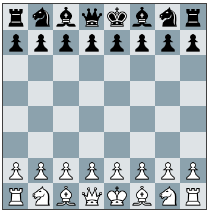Pinning and unpinning tactics are fundamental concepts in chess that can significantly influence the outcome of a game. Understanding how to utilize these tactics effectively is essential for chess players seeking to gain an advantage over their opponents. In this comprehensive guide, we will delve deep into the intricacies of pinning and unpinning tactics, exploring their definitions, strategic applications, tactical nuances, and practical examples to illustrate their importance in chess strategy.
Understanding Pinning Tactics
What is Pinning?
A pin is a tactical maneuver in which a piece is restricted from moving to protect a more valuable piece behind it, usually the king or queen. The pinned piece becomes a liability as it cannot move without exposing the more valuable piece to capture.
Types of Pins:
- Absolute Pin: The pinned piece is the king, and moving it would expose the king to check, which is illegal.
- Relative Pin: The pinned piece is any other piece except the king, and it cannot move without exposing a more valuable piece behind it.
Strategic Applications of Pinning Tactics
Creating Tactical Opportunities:
Pinning tactics create tactical opportunities by restricting the opponent’s pieces and limiting their mobility. By pinning a piece, players can exploit weaknesses in the opponent’s position and launch decisive attacks.
Controlling Key Squares:
Pinning tactics allow players to exert control over key squares and influence the centralization of the opponent’s pieces. By pinning a piece, players can restrict the opponent’s options and dictate the flow of the game.
Neutralizing Threats:
Pinning tactics can neutralize threats posed by the opponent’s pieces, particularly powerful bishops or knights. By pinning these pieces, players can mitigate their influence and prevent them from wreaking havoc on the board.
Mastering Unpinning Tactics
What is Unpinning?
Unpinning is the act of breaking the pin by moving the pinned piece, thus freeing the more valuable piece behind it from the pinning piece’s control.
Types of Unpinning:
- Direct Unpinning: Moving the pinned piece directly to break the pin.
- Indirect Unpinning: Creating a threat against the pinning piece to force it to move, thus breaking the pin indirectly.
Strategic Applications of Unpinning Tactics
Regaining Mobility:
Unpinning tactics allow players to regain mobility and flexibility in their position by freeing their pieces from the constraints of the pin.
Creating Counter-Threats:
Unpinning tactics can create counter-threats against the opponent’s pieces, exploiting weaknesses in their position and turning the tables in the player’s favor.
Seizing the Initiative:
Unpinning tactics can help players seize the initiative and gain control over the tempo of the game. By breaking the pin and unleashing their pieces, players can launch aggressive attacks and put pressure on the opponent.
Practical Examples of Pinning and Unpinning Tactics
Example 1: Game of the Century-Fischer vs. Byrne (1956)
In a famous game between Bobby Fischer and Donald Byrne, Fischer employed a powerful pinning tactic to immobilize Byrne’s knight and launch a devastating attack on his king.
Example 2: Kasparov vs. Karpov (1990 World Championship)
In a critical game of the 1990 World Championship match between Garry Kasparov and Anatoly Karpov, Kasparov utilized an ingenious unpinning tactic to break Karpov’s control over the center and seize the initiative.
Conclusion:
Pinning and unpinning tactics are essential tools in a chess player’s arsenal, allowing them to control the board, neutralize threats, and launch decisive attacks. By mastering these tactics and understanding their strategic applications, players can gain a significant advantage over their opponents and elevate their game to new heights. Through study, practice, and application, players can unlock the full potential of pinning and unpinning tactics and achieve success on the chessboard.


